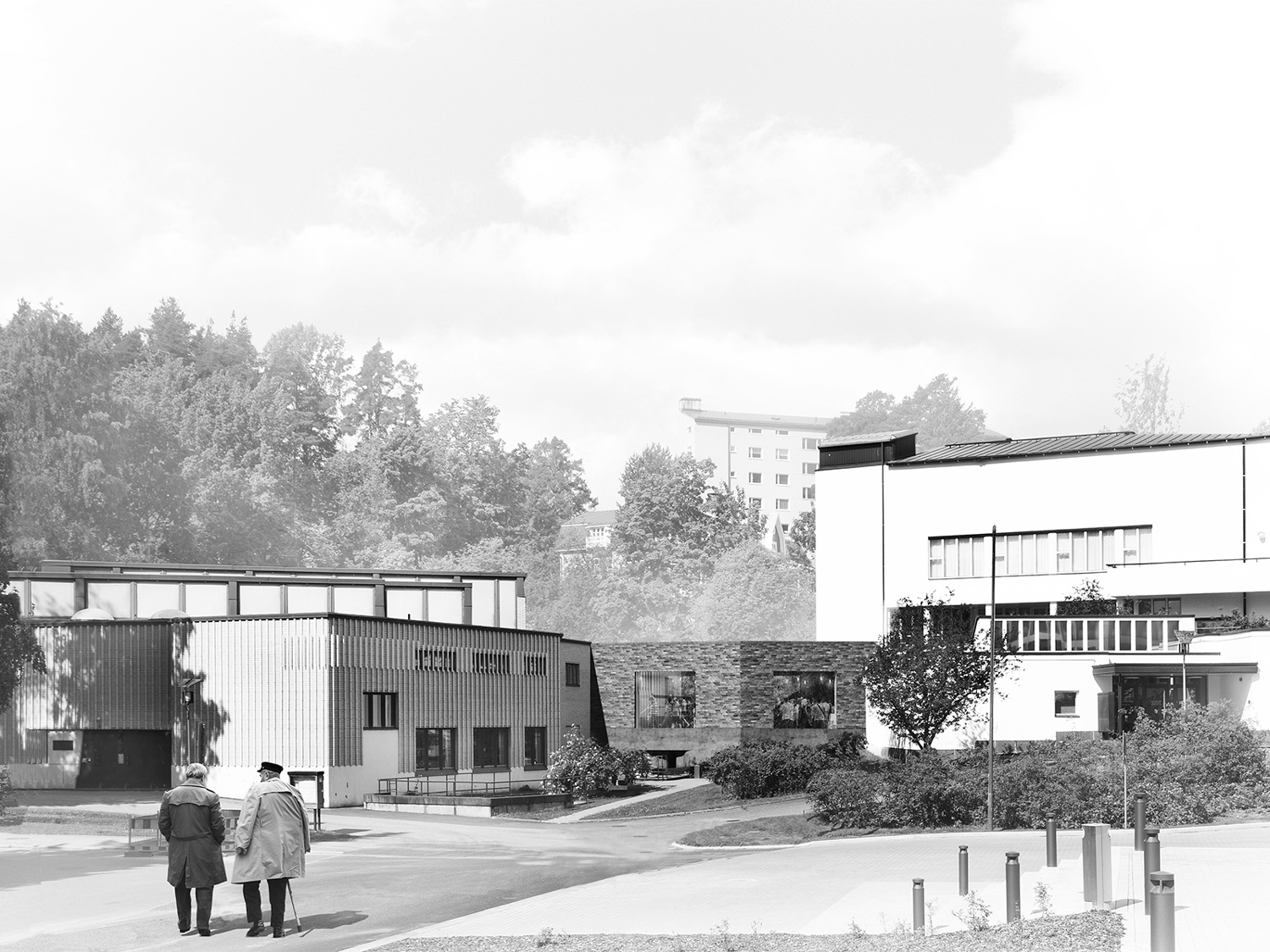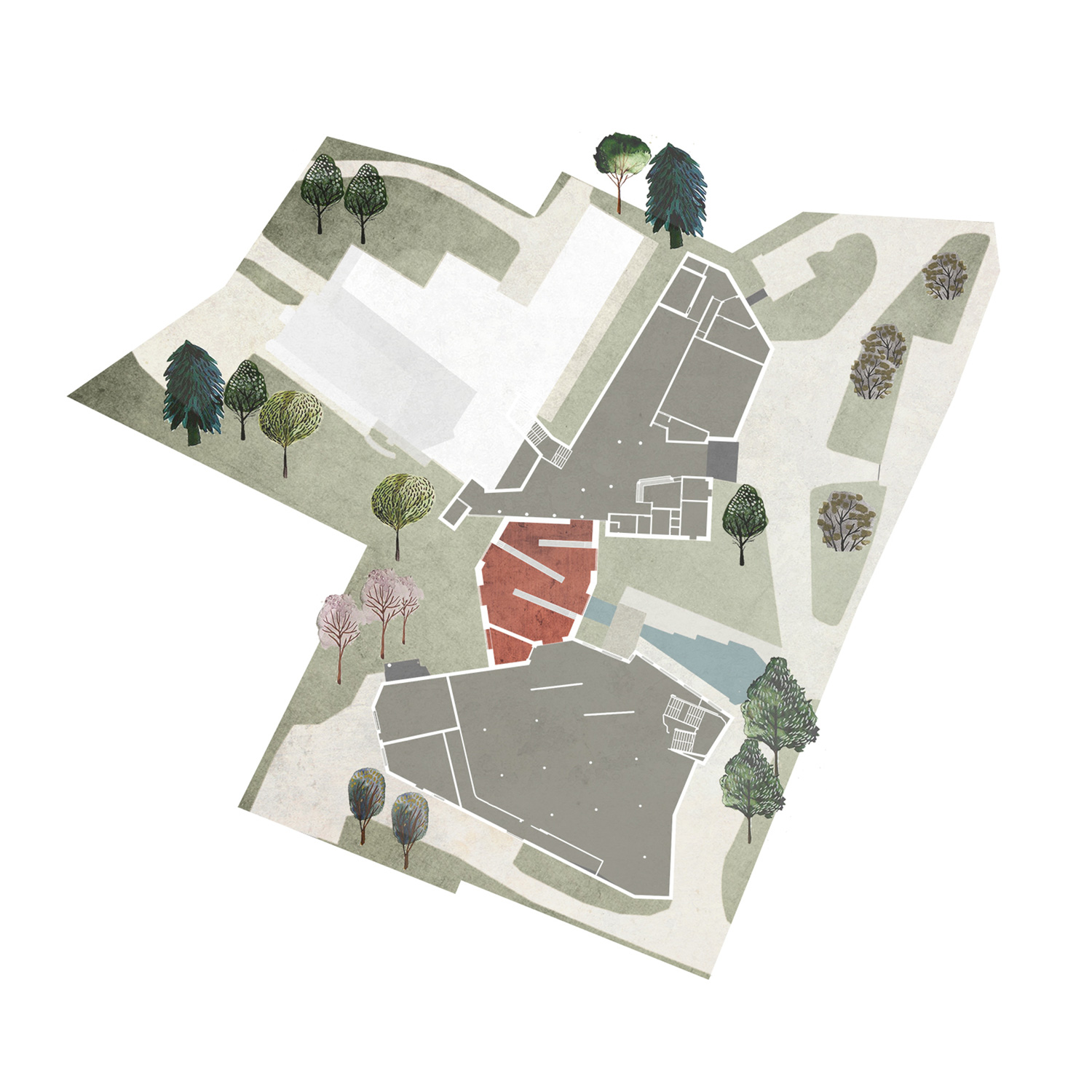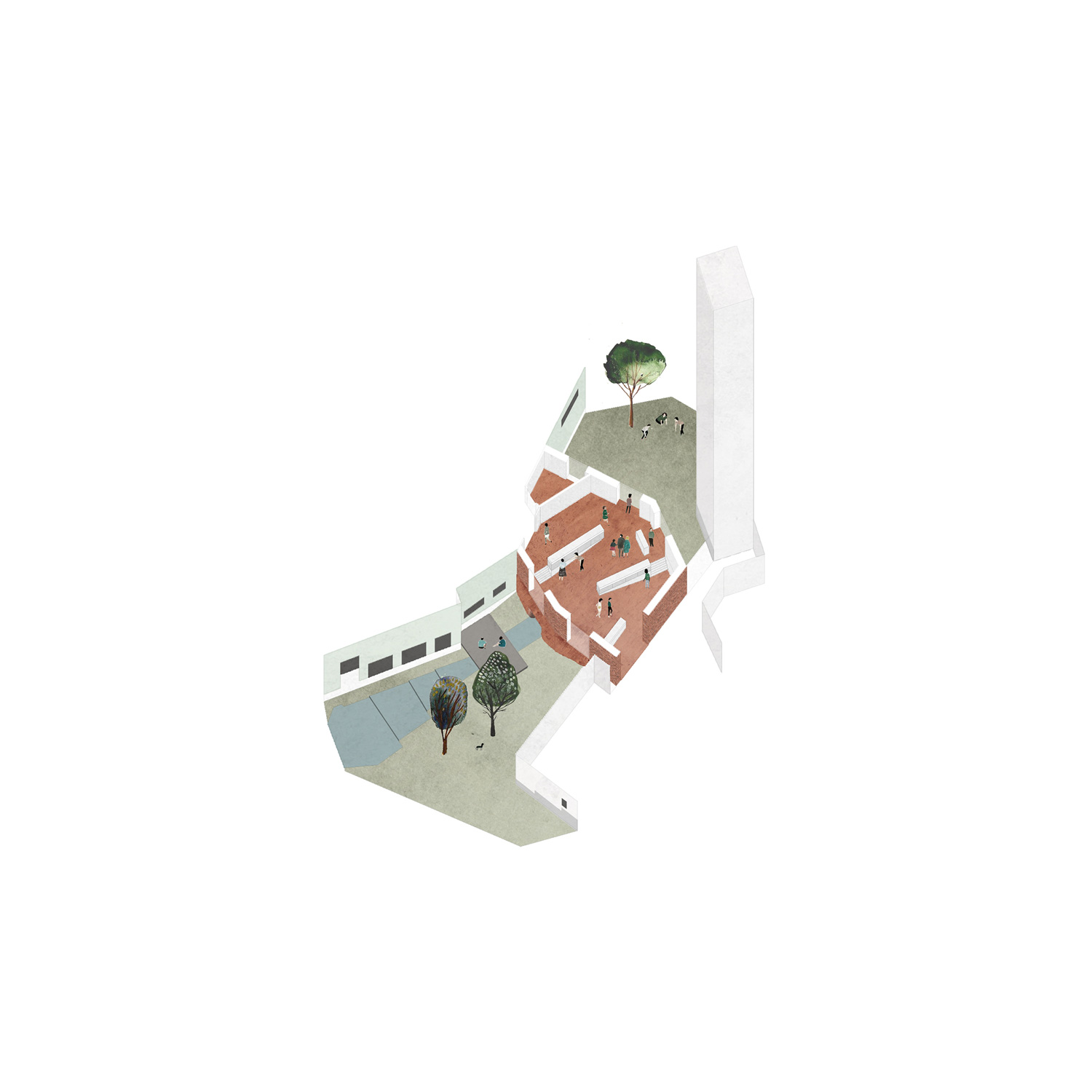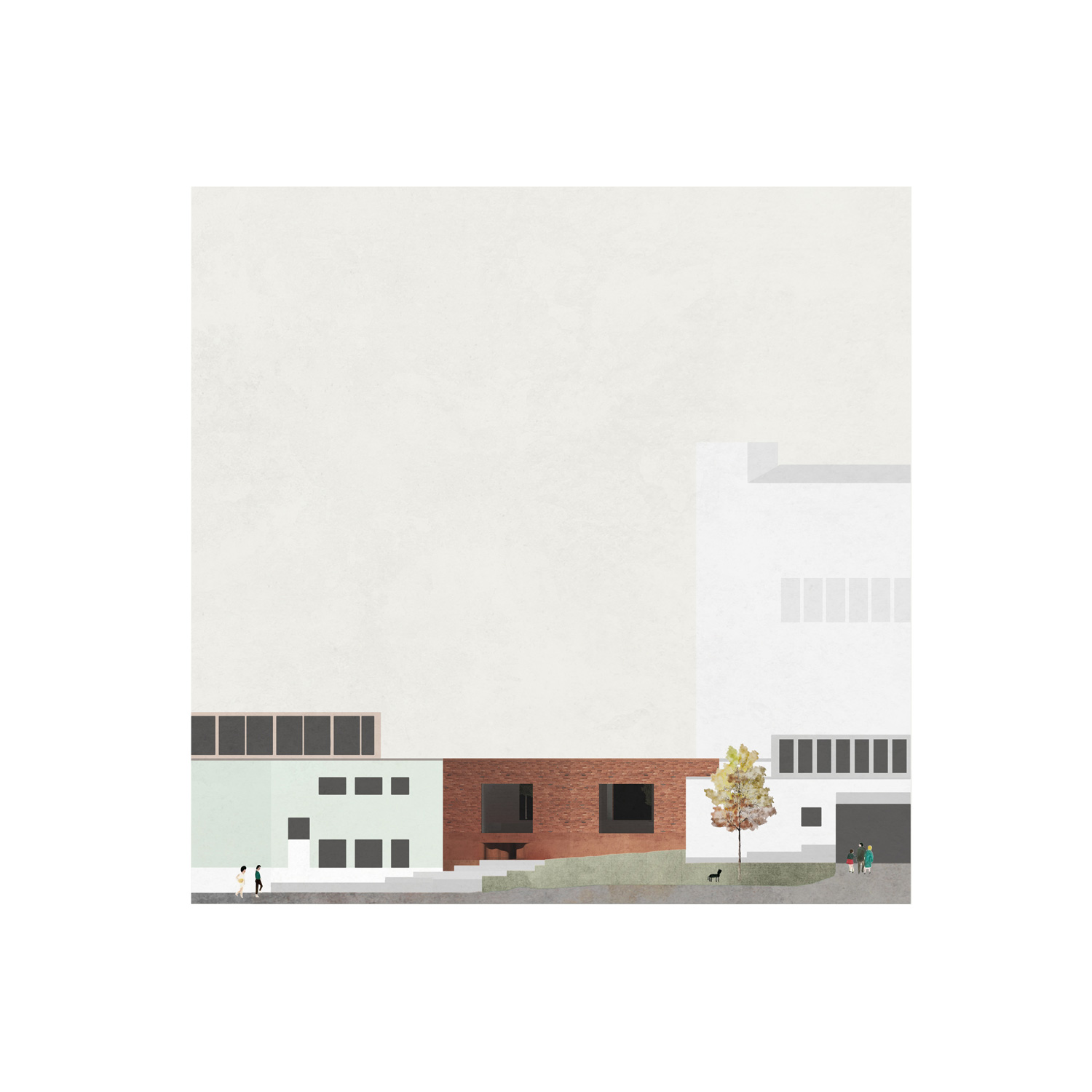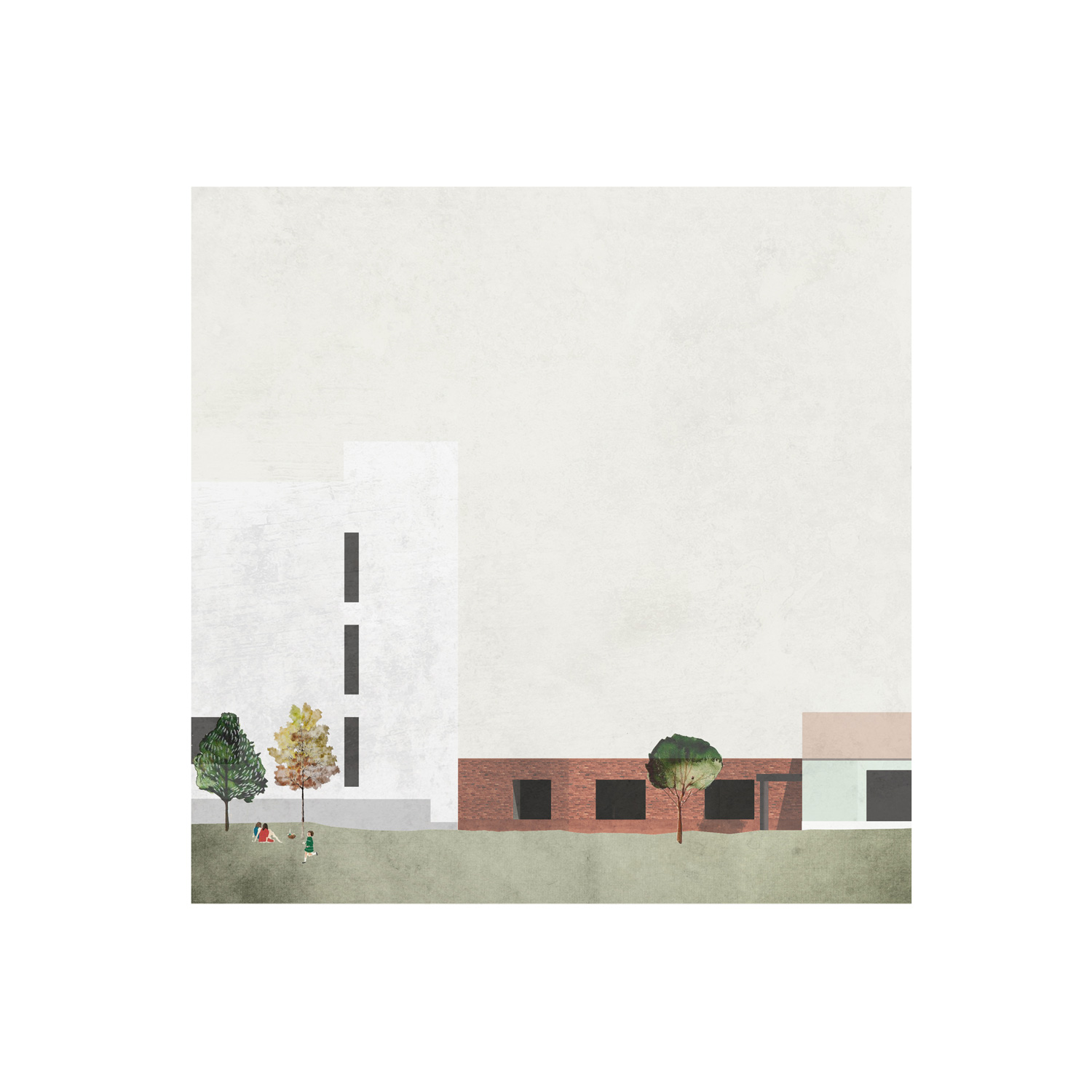2055-SIJ-FI-2015
Client: Unknown
Status: Competition (2015)
Location: Jyväskylä, Finland
Coordinates: 62.233641, 25.731198
Climate: Artic / polar, Cold
Material: Brick
Environment: Urban
Visualizer: Studio
Scale: 300 ㎡ Small
Types: Cultural, Museum
Slightly stepping back, like a discreet support for the two museums, stands the new extension. A humble building that sets back from the street allowing the existing museums take the front row. The intention is to create an extension that connects physically but at the same time separates the reading of two museums. Together they should not be regarded as an large complex but instead an ensemble of figures where the architecture of Alvar Aalto is maintained, making the new extension clearly visible as a new link. The new building is dressed in a red coat but relating to the existing Aalto buildings with the strict geometry of the building volume, materiality and flowing motion of the interiors.
Character
The exterior walls relates orthogonally to the facades of the two museums. This creates a subtle corner in the two facade and divides it into two faces with different directions. One wall opening is directly engaging with the water space of the ponds and the other is overlooking the Ruusupuisto building. The new exterior wall that connects to the Museum of Central Finland are placed so that gaps are created letting daylight into the existing entrance area of the museum creating a defined connection between the new and old.
Building
The whole building is constructed as a continuous ramp that connects the two different levels of the museums. This makes the building a public place in a true sense. The extension is made accessible to visitors in wheelchairs or people with a strollers without costly and difficult renovations of the existing lift. The museum shop is spread out on plateaus along the pathway and is integrated to the architectural elements of the new building. Low brick walls are placed to define the route and to introduce divisions in the open space. These walls have several practical functions as seating, shortcut steps, display cabinets and ventilation supply. The red concrete from the exterior is being used as interior flooring and the interior walls are made of white glazed brick to match the exterior cladding of the Alvar Aalto museum.
Landscape
The existing stream of water on the site continues to flow through the new extension and the water exit through an sculpted outlet inspired by the organic shapes of Alvar Aalto. We want this to be regarded as a homage to the great architect, but also gently respecting the architecture and the natural beauty of the site.
